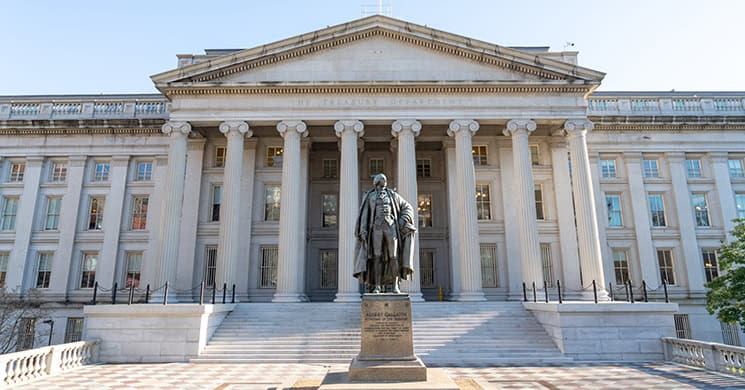U.S. Treasury yields rose on Wednesday with the 10-year hitting a fresh multiyear high as investors digested the latest economic data and considered the outlook for Federal Reserve interest rates.
The 10-year Treasury yield gained around 6 basis points to 4.908%, rising above 4.9% for the first time since 2007. Meanwhile, the 2-year Treasury yield was around flat at 5.22%, near levels last seen in 2006.
Also notably, the 5-year Treasury moved as high as 4.937%, its top level since 2007.
Yields and prices move in opposite directions and one basis point equals 0.01%.
Investors considered fresh economic data as uncertainty about the path ahead for Fed monetary policy grew in recent weeks.
Housing starts accelerated in September, but rose as a slower-than-expected rate, according to data released Wednesday. Building permits fell in the month, but lost less than economists anticipated.
Retail sales figures for September, which were published Tuesday, increased by 0.7% for the month. That’s far higher than the 0.3% anticipated by economists surveyed by Dow Jones, and indicates resilience from consumers in light of higher interest rates and other economic pressures.
The data brought up renewed concerns over the outlook for interest rates, with some investors viewing it as an indication that rates may be hiked further or at least kept elevated for longer.
Markets are still pricing in an approximately 94% chance that rates will remain unchanged when the Fed announces its next monetary decision on Nov. 1, but the probability of a December rate increase rose after Tuesday’s data, according to the CME Group’s FedWatch tool.
In recent days and weeks, various Fed officials have indicated that the central bank may be done hiking, especially as higher Treasury yields are contributing to tighter economic conditions. Further comments from policymakers are expected this week, including by Fed Chairman Jerome Powell, and investors are looking to their comments for hints about their policy expectations.
Upcoming economic data may also influence opinion among both investors and Fed officials.

